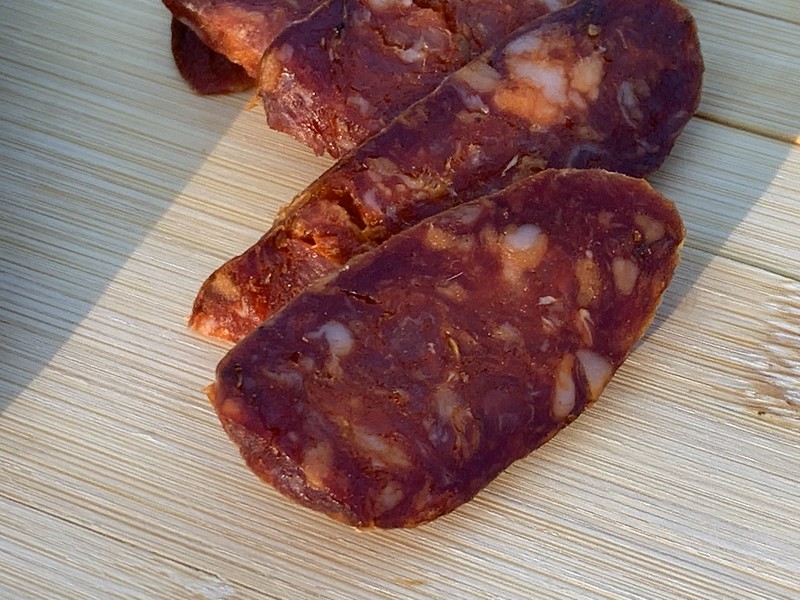StefanS wrote: ↑Sun Jan 03, 2021 18:03
IMHO - i do not know your whole process of making that chorizo but by your description and pictures can think about couple reasons.
Firstly - case hardening - my explanation below.
Secondly - fat smearing - possible but I can not say it for sure because do not know meat/fat temperatures during process.(also if you used a fat with high level of unsaturated fatty acids that can be problem too).
Thirdly - you do not use any bacterial starter (following recipe from different part of world without knowing own environmental isn't good idea).
Probably during initial stage of fermentation and drying you used too low Right Humidity level for small diameter of casing. It gives fast drying on outer diameter of salami. It prevent moisture from core move and evaporate in sufficient rate. Trapped moisture help proteolytic enzymes work in high speed so they produce alkaline byproducts - that the reason you have pH above 7.0. Also it prevent reactions of produce lactic acid by fermenting sugars ( you added 3.0 g plus sugars in pimenton (~2.5 g/kg).Also you didn't add any starter so initial count of LAB is also suspicious). Later drying obliterated most of differences between outer and inner core. But your "squishy mouthfeel" still.
It is what I can think about your chorizo.
Stefan, thanks for the thoughts on this one, I very much appreciate it! A few details....
Fat and meat were kept VERY cold during processing. After cutting into grinder sized strips, they went in the freezer for about an hour. I ground the fat first through the 7mm plate, then immediately put it back in the freezer. The meat was then ground, and also back in the freezer. The fat was a mix of fat cap from the pork butt, and some belly fat that I had from bacon trim.
QUESTION: Do you think that this type of fat was an issue? During mixing and stuffing, the fat remained very distinct, so I believed that I did a good job of avoiding smearing.
I did not use a starter, as one was not called for in the recipe, so I tried to follow it verbatim. During the fermentation step, I had two thermometers that agreed on temp, though was only using one humidity sensor, so there is a possibility that sensor is not accurate at all. I will test that today. My fermentation temps were 80-82F, and RH rose very quickly to 85-90% and stayed there during the fermentation time. I only deviated from the recipe in the fermentation step by skipping the addition of smoke.
I only have the one humidity sensor in my curing chamber, which is controlled (and sensed) by an Inkbird controller. I had checked that sensor for accuracy some time ago, but not recently. I will add that to my to-do list as well to make sure that I don't have an issue with false RH readings in the chamber, too.
I'm certain that I messed up something in the process, and I won't skip a culture again, regardless of recipe, so that I won't have to worry about having the right microbiology for the fermentation step. On my Finochionna that I just started, I used T-SPX, and the pH readings progressed well to just under 5.2 in 36 hours, so I feel good about those.
Again, I appreciate your thoughts on what might have gone wrong. That pH reading of 7 definitely tells me that unexpected microbiological processes were at work.
Rich





 Feed it to your boss first see what happens.
Feed it to your boss first see what happens. 

